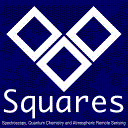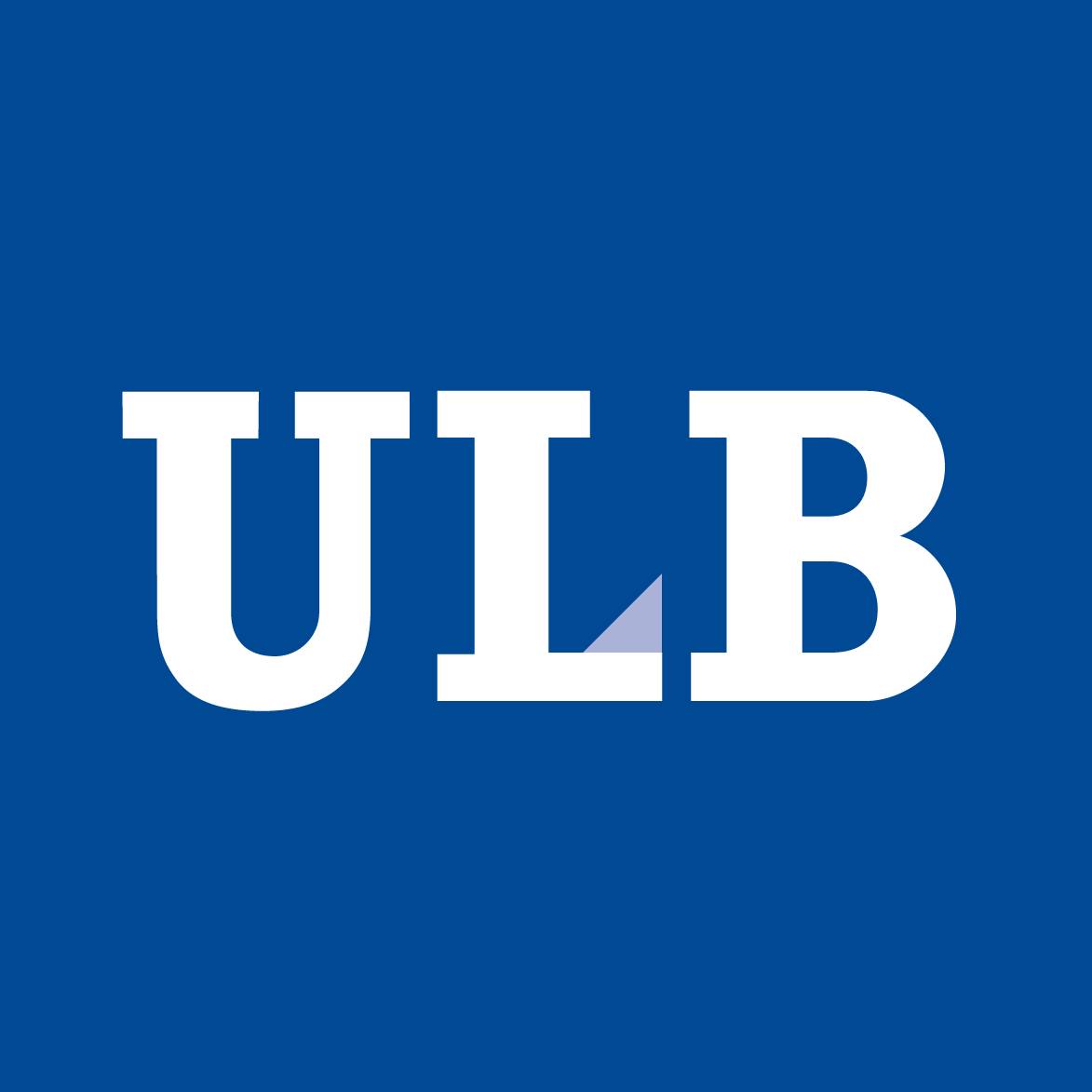 |
Spectroscopy, Quantum Chemistry and Atmospheric Remote Sensing
|
|
|
Structure and dynamics of atoms and molecules
The “Quantum Chemistry and Atomic Physics”
unit focuses on the calculation of the structure and
dynamics of atomic and molecular species that are
relevant in various fields such as spectroscopy,
atmospheric chemistry, astrophysics and astrochemistry,
nanoelectronics, or quantum computing.
We are active in many research areas, some of which are
outlined below. A description of previous research
performed in our group over the years can be found here.
A searchable list of publications authored by members
of the group is available here.
Computational Atomic Structure
Calculation of atomic structures and data
including energy levels, electron affinities, radiative
and non-radiative transition rates, lifetimes of excited
levels, fine and hyperfine parameters, isotope shifts,
polarizabilities of neutral atoms, negative and
multicharged ions. These atomic data are relevant in
astrophysics, plasmas physics, thermonuclear fusion
research programs and in the study of earth and
planetary atmospheres. We contribute to the development
of methods and computer codes for calculating electronic
wave functions and spectroscopic properties, including
correlation and relativistic effects. The group is
involved in developing state of the art computer codes
for atomic calculations in the non-relativistic scheme
with relativistic corrections in the Breit-Pauli
approximation ATSP2K as well as in the fully
relativistic scheme GRASP2K. The codes rely on
multiconfiguration methods and the wave function for an
atomic state is expanded in configuration state
functions. Some of the group's research are highlighted
in this "Lab
Talk" article in Journal of Physics B.
Collaborations: Charlotte Froese Fischer (NIST), Alan
Hibbert (Queen's U), Ian Grant (Oxford), Per Jönsson
(Malmö U.), Gediminas Gaigalas (Vilnius U.), Paul
Indelicato (Sorbonne Universités), and many others: see
the "International collaboration on Computational
Atomic Structure" (CompAS).
Astrochemistry
We calculate potential energy surfaces by
means of high level quantum chemistry methods in order
to describe elementary astrophysical reactions, like the
interstellar C + H3+ → CH+
+ H2 reaction, recently studied by collision
experiments. We participate in the development of models
describing the chemistry of various astrophysical
environments. Our current research is centered on
planetary and cometary atmospheres, with the aim to
explain the observed densities and compositions through
chemical models. These models rely on quantities
such as reaction cross-sections and rate constants that
can be subject to large uncertainties. We identify key reactions
in these models and compute the reaction cross sections
and rates using quantum-mechanical methods. We are
currently working in collaboration with the BIRA-IASB on
the modelling of the composition coma of the comet 67P,
which is being measured using the ROSINA
instrument aboard Rosetta. More information on this
project is available at the dedicated website.
Collaborations: J. De Keyser, R. Maggiolo (BIRA-IASB),
X. Urbain (UCL), P. Quinet, P. Palmeri (UMons).
Molecular Spectroscopy
We perform accurate calculations of the
spectra of polyatomic molecules that can be compared to
experimental measurements. We focus in particular on the
rovibrational structure of small molecules of
astrophysical interest. We developed for this purpose an
original ab initio method of calculation combining
variational and pertubation theories. We also contribute
by means of large scale ab initio calculations to the
interpretation of the electronic spectra of transition
metal containing diatomics and of the photelectron
spectra of cyanoacetylenic species.
Collaborations: P. F. Bernath (Old Dominion University),
P. Cassam-Chenaï (Nice Sophia Antipolis University), S.
Boyé-Péronne, D. Gauyacq, B. Gans (ISMO, University
Paris-Sud, Orsay).
Excited Electronic States
Highly excited electronic states participate
in a large range of reactions such as charge transfer,
molecular photodissociation, ion-pair production and
neutralization, isomerization,… which are important in
astrophysical environments as well as in plasma physics.
We investigate the structure and dynamics of excited
valence and Rydberg electronic states of diatomic and
small polyatomic molecules. We use post-Hartree-Fock
quantum chemistry methods with large basis sets to
determine accurate potential energy surfaces of these
species. The topography of these surfaces (stationary
points, reaction paths, conical intersections) is
investigated. For molecular complexes we develop adapted
basis sets containing atomic orbitals that are optimized
to reproduce the excited states of the fragments.
Non-adiabatic radial and rotational couplings between
the excited PECs are calculated and used to define the
diabatic representation. We also compute other molecular
parameters such as dipole matrix elements, spin-orbit
couplings, Born-Oppenheimer corrections,… Different
methodologies (wave packet propagation, R matrix method,
semi-classic approaches) are used to solve the nuclear
Schrodinger equation and elucidate the dynamics
involving Rydberg states.
Collaborations: M. Desouter-Lecomte (LCP, University
Paris-Sud, Orsay), X. Urbain (UCL), K. Béroff, M.
Chabot, S. Boyé-Péronne, D. Gauyacq, B. Gans (ISMO,
University Paris-Sud, Orsay).
Quantum Control & Quantum Computing
In collaboration with the
Laboratoire de Chimie Physique of the University
Paris-Sud, we are exploring the laser control of
molecular systems. The manipulation of reactive
processes using external fields has proven to be a very
useful tool to control the outcome of reactions. We are
developing methodological tools based on time-dependent
methods combined with local control and optimal control
algorithms with additional constraints to obtain pulses
that can be realized experimentally. We are studying
processes such as the optimization of specific channels
in the photodissociation of molecular ions, or the
control of the vibrational redistribution in acetylene.
We are also interested in the potential applications of
laser control to quantum computing by encoding qubits on
systems such as vibrational states of trapped ions or on
hyperfine states of ultracold polar molecules.
Collaborations: M. Desouter-Lecomte (LCP, University
Paris-Sud, Orsay), C. Meyer (Université Toulouse III
Paul Sabatier).
Surface Reactions
Heterogeneous chemistry at the solid/gas
interface plays a crucial role for the formation of
molecules in many astrophysical environments, such as
the interstellar medium (ISM), the Earth’s atmosphere,
or the outgassing in the cometary coma. We focus in
particular on the study of adsorption of atoms by
methane ices surrounding interstellar dust grains and on
the desorption of small species such as methanol from
grains under the action of UV radiation. We employ a
QM/MM approach in which the grain surface is described
classically, while its interaction with the adsorbed
molecules is treated quantum-mechanically.
Collaboration: J. De Keyser (BIRA-IASB).
Nanoelectronics
The reduction of silicon transistor size
allowed the incredible increase of computing capacity
over the past fifty years, in accordance with Moore’s
law. As this miniaturization is becoming increasingly
difficult to achieve, it is important to look at
alternative to silicon transistors. The aim of
nanoelectronics is to explore new methods and materials
that could provide solutions to this problem. Quantum
dots represents a potential candidate, as these
nanocrystals can operate as single electron transistors
(SET). The properties of the SET can be manipulated with
external fields, which requires knowledge of structural
variables and modelling of transport phenomena.
Furthermore, we are also investigating the possibility
of using exciton states as an implementation of qubits
for quantum computing. Another project focuses on using
Transition metal dichalcogenides (TMDC) monolayers.
These semiconductors provide a promising alternative to
silicon and can be used as transistors as they have a
great electronic mobility and a direct band gap. We
study the electronic, optical and transport properties
of TMDC using various methods and explore their capacity
to make a good quantum computing device.
Collaborations: M. Desouter-Lecomte (LCP, University
Paris-Sud, Orsay), C. Meyer (Université Toulouse III
Paul Sabatier).
List of active projects
- ACME (Ammonia Collisions MEchanisms), collaboration with Oxford University funded by the Wiener-Anspach Foundation.
- C-Erosion (cometary and planetary erosion), collaboration with the BIRA-IASB,
UCL, UMons,
funded by the FNRS.
- Elementary processes in laser and plasma, collaboration with UCL, funded by the FNRS (IISN projects).
- COST Action MOLIM
(MOLecules In Motion), PI A. Csaszar, funded by the European Cooperation in Science and Technology.
- COST Action Our Astro-Chemical History, PI L. Wiesenfeld,
funded by the European Cooperation in Science and Technology.
- IAP-VII Network (2012-2017) " The Belgian Research Initiative on eXotic nuclei
for atomic, nuclear and astrophysics studies (BriX) " - see the BELSPO Interuniversity Attraction Poles Programme
(PAI) .
- Excellence of Science FNRS & FWO Research Project (EOS) ``Heavy Element Research for Nuclear, Atomic and Astrophysics Studies'' (EVEREST), (EOS-O022818F, 2018-2021),
coordinated by Pieter Van Duppen (KULeuven, Nuclear spectroscopy). Other Co-PIs: Riccardo Raabe (KULeuven, Nuclear reactions), Stephane Goriely and Sophie Van Eck (ULB, Nuclear Astrophysics)
(Excellence of Science FNRS & FWO Research Project (EOS).
|
 |
Université Libre de Bruxelles – Faculté des Sciences |
|
